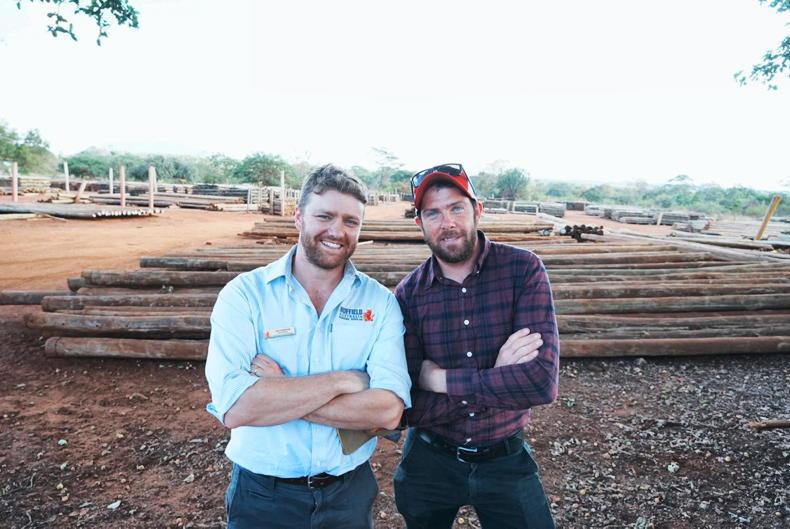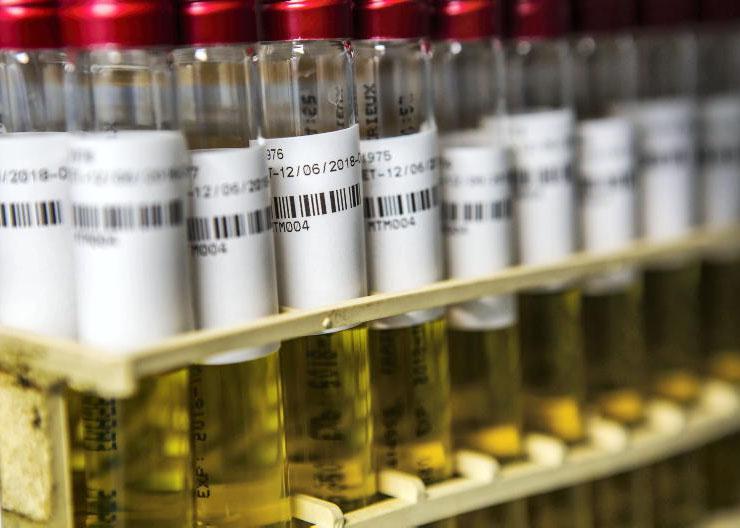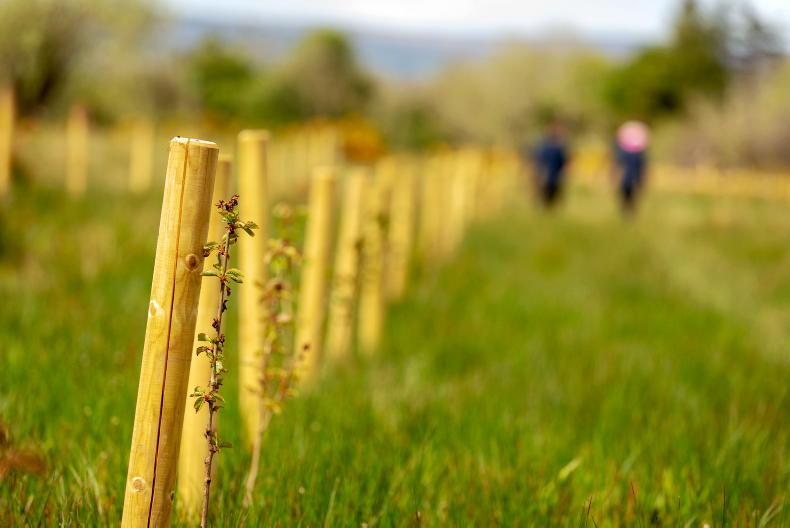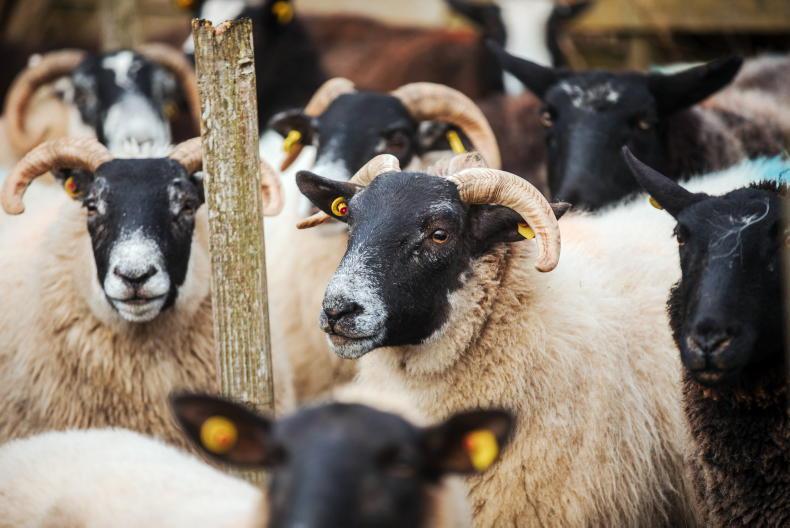Growing up on a border farm in south Tyrone brings back many vivid memories for Monaghan businessman and farmer Pat McKenna.
One of five children reared on the suckler beef farm during ‘the troubles’, Pat had a fascination with the wildlife, which then abounded on the land.
“Around this time of year, we’d be looking forward to the snow,” recalls Pat, “to better track foxes, hares and pheasants” – though discarded bullet casings and army stoves were occasionally among the young tracker’s surprise bounty.
Pat spent his 20s working in the US where he built a small but successful business in home decorating.
He and his wife Marge returned to Ireland in 1992, their entrepreneurial spirit initially leading them to mushroom-growing, before opening a food business in Monaghan which continues today.

Pat McKenna, farmer and businessman, at his home in north Co Monaghan.
In 2001, a 65-acre farm close to Pat’s homeplace came up for sale, and he couldn’t resist: this is one of three diverse blocks of land that today Pat farms with his suckler calf-to-beef Dexter herd.
Virtual fencing
The largest section is an expanse of Sliabh Beagh Mountain, owned by An Taisce, which Pat farms to meet their key objectives of enhancing biodiversity, reducing fire risk, protecting natural water sources and sequestering carbon – “ecosystem services” for which Pat finds the light, hardy Dexters ideal.
Pat overwinters some cattle on drier, scrubby, sheltered areas of the hill, even managing to finish some directly on the diverse natural habitats.
Herding stock on such an extensive, remote site is a logistical challenge, so Pat employs a ‘No Fence’ virtual fencing system: 30 cows wear satellite collars, which alert them (with a mild shock) when they approach a ‘virtual fence’, drawn by Pat using a simple phone app.
Pat finds that it certainly makes life easier, allowing him to track stock movement and target grazing where and when it’s needed – though he still regularly checks stock himself to ensure they are in good health.
Farming philosophy
Pat’s overall perspective on farming is fascinating and refreshing: he sees no conflict between his laser-like focus on improving farm profit margins with his lifelong love of wildlife. His farming philosophy features three key principles.
Firstly, Pat is a salesman’s worst nightmare. Currently, his main expense is the cost of contractors to cut silage and spread slurry, reducing his need for heavy machinery. He doesn’t reseed or fertilise his grasslands – relying on healthy soils and clover to maintain fertility.
The Dexters require minimal supplementation, just a few bags of meal to help with herding, as Pat doesn’t push cattle to finish young. Some are three years old when slaughtered, which he feels adds taste and enhances the “animal wellbeing” story for his customers.
Secondly, Pat maximises his income by selling direct. He is part of the cross-border Sliabh Beagh Food Group – the iconic landscape is key to branding his organic, “rare-breed” meat.
He sells direct to households, farm shops and the local Truagh Meals on Wheels Group. Customers appreciate the ‘backstory’ of Pat’s locally-produced, biodiversity-positive beef, helping to add an estimated 40% to the value of his product.
Thirdly, Pat firmly believes in maximising any relevant available subsidies. He doesn’t view this money as “compensation”, but as reward for providing vital services to society, on whose behalf the Government is rightly willing to pay.
He has participated in several agri-environmental projects and schemes, and is currently converting to organics.
He is continually frustrated by scheme anomalies and growing paperwork – feeling that more integration and transparency are badly needed.
Pat is tremendously knowledgeable and entertaining company, which belies his acute business acumen. He loves farming this marginal land but insists it must be profitable, and profits must grow, if another generation is to be incentivised to stay on this land.
Quite a challenge, but Pat is certainly succeeding and delights in proving this can be done while retaining the natural character and diversity of the landscape he enjoyed as a youth.
He is bullish about the future: he is tuned-in to market trends and is convinced that the demand for quality meat and diverse ecosystem services will remain strong, keeping his farm business on track to sustainability.
Top tips
Pat recalls that small quantities of ivy were always known as an appetite stimulant for cattle “off their feed” in his part of the country.
Virtual fencing is an up-and-coming technology, which may lend itself well to part-time farming on remote, extensive areas.
The National Parks and Wildlife Service (NPWS) recently published a research report on virtual fencing trials, see here.
Name: Pat McKenna.Farm type: Suckler calf-to-beef.Farm size: 65 acres owned, plus leased land.Focus: Generating profit while farming marginal land in a nature-friendly way.Schemes: ACRES, Organic Farming Scheme.
Growing up on a border farm in south Tyrone brings back many vivid memories for Monaghan businessman and farmer Pat McKenna.
One of five children reared on the suckler beef farm during ‘the troubles’, Pat had a fascination with the wildlife, which then abounded on the land.
“Around this time of year, we’d be looking forward to the snow,” recalls Pat, “to better track foxes, hares and pheasants” – though discarded bullet casings and army stoves were occasionally among the young tracker’s surprise bounty.
Pat spent his 20s working in the US where he built a small but successful business in home decorating.
He and his wife Marge returned to Ireland in 1992, their entrepreneurial spirit initially leading them to mushroom-growing, before opening a food business in Monaghan which continues today.

Pat McKenna, farmer and businessman, at his home in north Co Monaghan.
In 2001, a 65-acre farm close to Pat’s homeplace came up for sale, and he couldn’t resist: this is one of three diverse blocks of land that today Pat farms with his suckler calf-to-beef Dexter herd.
Virtual fencing
The largest section is an expanse of Sliabh Beagh Mountain, owned by An Taisce, which Pat farms to meet their key objectives of enhancing biodiversity, reducing fire risk, protecting natural water sources and sequestering carbon – “ecosystem services” for which Pat finds the light, hardy Dexters ideal.
Pat overwinters some cattle on drier, scrubby, sheltered areas of the hill, even managing to finish some directly on the diverse natural habitats.
Herding stock on such an extensive, remote site is a logistical challenge, so Pat employs a ‘No Fence’ virtual fencing system: 30 cows wear satellite collars, which alert them (with a mild shock) when they approach a ‘virtual fence’, drawn by Pat using a simple phone app.
Pat finds that it certainly makes life easier, allowing him to track stock movement and target grazing where and when it’s needed – though he still regularly checks stock himself to ensure they are in good health.
Farming philosophy
Pat’s overall perspective on farming is fascinating and refreshing: he sees no conflict between his laser-like focus on improving farm profit margins with his lifelong love of wildlife. His farming philosophy features three key principles.
Firstly, Pat is a salesman’s worst nightmare. Currently, his main expense is the cost of contractors to cut silage and spread slurry, reducing his need for heavy machinery. He doesn’t reseed or fertilise his grasslands – relying on healthy soils and clover to maintain fertility.
The Dexters require minimal supplementation, just a few bags of meal to help with herding, as Pat doesn’t push cattle to finish young. Some are three years old when slaughtered, which he feels adds taste and enhances the “animal wellbeing” story for his customers.
Secondly, Pat maximises his income by selling direct. He is part of the cross-border Sliabh Beagh Food Group – the iconic landscape is key to branding his organic, “rare-breed” meat.
He sells direct to households, farm shops and the local Truagh Meals on Wheels Group. Customers appreciate the ‘backstory’ of Pat’s locally-produced, biodiversity-positive beef, helping to add an estimated 40% to the value of his product.
Thirdly, Pat firmly believes in maximising any relevant available subsidies. He doesn’t view this money as “compensation”, but as reward for providing vital services to society, on whose behalf the Government is rightly willing to pay.
He has participated in several agri-environmental projects and schemes, and is currently converting to organics.
He is continually frustrated by scheme anomalies and growing paperwork – feeling that more integration and transparency are badly needed.
Pat is tremendously knowledgeable and entertaining company, which belies his acute business acumen. He loves farming this marginal land but insists it must be profitable, and profits must grow, if another generation is to be incentivised to stay on this land.
Quite a challenge, but Pat is certainly succeeding and delights in proving this can be done while retaining the natural character and diversity of the landscape he enjoyed as a youth.
He is bullish about the future: he is tuned-in to market trends and is convinced that the demand for quality meat and diverse ecosystem services will remain strong, keeping his farm business on track to sustainability.
Top tips
Pat recalls that small quantities of ivy were always known as an appetite stimulant for cattle “off their feed” in his part of the country.
Virtual fencing is an up-and-coming technology, which may lend itself well to part-time farming on remote, extensive areas.
The National Parks and Wildlife Service (NPWS) recently published a research report on virtual fencing trials, see here.
Name: Pat McKenna.Farm type: Suckler calf-to-beef.Farm size: 65 acres owned, plus leased land.Focus: Generating profit while farming marginal land in a nature-friendly way.Schemes: ACRES, Organic Farming Scheme. 










SHARING OPTIONS